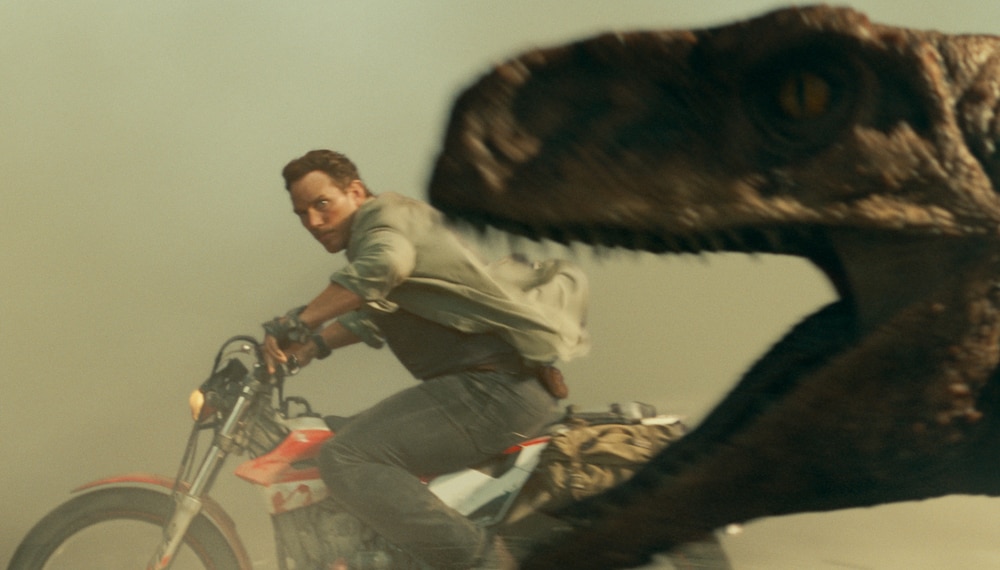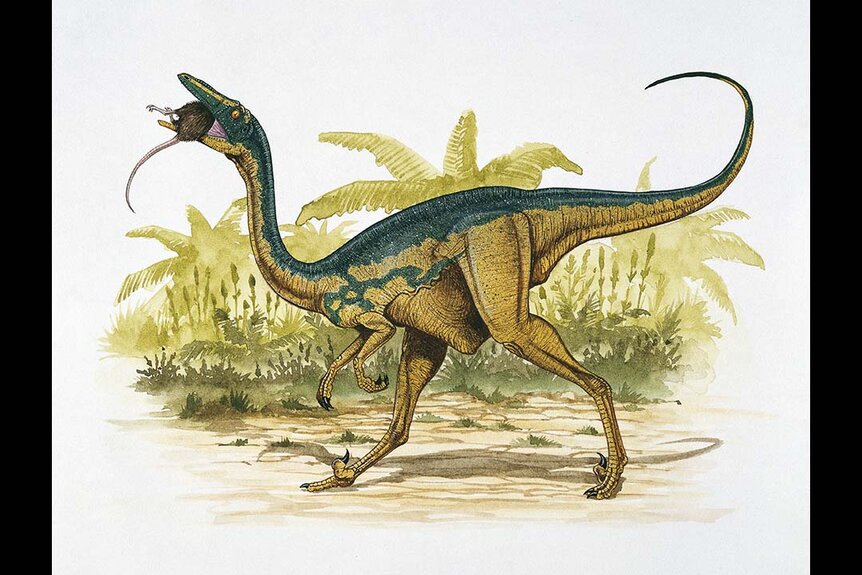Create a free profile to get unlimited access to exclusive videos, sweepstakes, and more!
What's on the dino-menu? Small mammal found inside Microraptor's stomach
It's basically a prehistoric turducken.

In 1993, a small group of scientists and a lawyer visited a remote island owned by an eccentric entrepreneur. There they found a theme park filled with resurrected dinosaurs. It was undoubtedly, the coolest thing they had ever seen, and for some it was the last. In a movie packed with perfect moments, there is perhaps none more memorable than the T. rex breaking out of the paddock, stalking around menacingly, and swallowing said lawyer hiding on the toilet. It was the first in a long line of on-screen deaths in the Jurassic Park franchise which continued through Jurassic World Dominion (catch the extended edition streaming now on Peacock), and proved that fictional dinosaurs, at least, are perfectly happy to snack on mammals when the opportunity arises. The diets of prehistoric animals, however, are a little murkier.
Most of the time, paleontologists are left to infer diets from incomplete data. They can look at the shape of the teeth and compare them to modern animals to see what they’re good at chewing on. Finding bitemarks in a fossil which match the tooth shape of another animal is a pretty good sign, but we’re mostly trying to build a clear picture out of shadow puppets. But sometimes, when paleontologists get very lucky, they find a dinosaur preserved along with its last meal. These rare fossil finds are unambiguous information about what a particular individual ate, and they’re a nice little bonus inside already exciting discoveries. Like the prize at the bottom of a box of cereal.
RELATED: Scientists use environmental DNA to reconstruct entire 2-million-year-old ecosystem
Recently, an international team of scientists published a paper on the discovery of a Microraptor zhaoianus with the preserved remains of a small mammal still inside its body cavity. The discovery was published in the Journal of Vertebrate Paleontology. M. Zhaoianus was a small, feathered carnivore which lived during the Early Cretaceous, about 125 million years ago and the discovery supports the idea that they were generalist carnivores, snacking on just about anything they could get their jaws around.
Inside the specimen’s gut, researchers found the preserved and articulated right foot of a small mammal, probably about the size of a modern mouse. The position of the foot sandwiches it between the left and right ribs, supporting the idea that it existed within an articulated ribcage which was later compressed. The hand is accompanied by several other long bones, suggesting that other parts of the mammal are preserved but less well articulated and more difficult to identify. Basically, paleontologists got a two-for-one special when they dug up this fossil and found one animal tucked neatly inside another.
This prehistoric turducken was discovered by Hans Larsson, a Professor of Biology at the Redpath Museum at McGill University. “These finds are the only solid evidence we have about the food consumption of these long extinct animals — and they are exceptionally rare,” Larsson said in a statement from McGill University.
While preserved gut contents are incredibly rare, as Professor Larsson noted, this is actually the second specimen of M. zhaoianus we’ve found holding onto a snack for later. The prior fossil had bits of a lizard inside, and now we can add mammal to the menu. A closely related species, M. gui, has also been found with the preserved remains of fish and birds in its stomach. Even if the two species didn’t cross lanes, it demonstrates that microraptors enjoyed a diverse gastronomic selection.
RELATED: Research reveals the final meal eaten by a 110-million-year-old armored dinosaur
“Knowing that Microraptor was a generalist carnivore puts a new perspective on how ancient ecosystems may have worked and a possible insight into the success of these small, feathered dinosaurs,” Larsson said. And a lot of that success might have been precisely because of their feathers.
Many early mammals either lived in trees or burrowed in underground nests. That helped them stay out of sight of many dinosaur species, but Microraptors were probably an exception. We have evidence that some species of Microraptor were capable of gliding or even powered flight. It’s likely that M. zhaoianus had at least some form of aerial maneuvering ability. Some species could even climb trees and move around in the branches. Their relatively small size and ability to move around on land, in the trees, and over the air, would have provided them plenty of opportunity to encounter small mammals scurrying in the treetops. And it’s the perfect high ground to pounce on unsuspecting prey running along the ground.
For a while, more than a hundred million years ago, Microraptors may have been among the most terrifying threats facing our distant ancestors. Millions of years later the Theropods are chickens and we fly spaceships. Everyone gets their moment.
Haven’t had your fill of hungry dinosaurs? Check out Jurassic World Dominion, now streaming on Peacock!



























